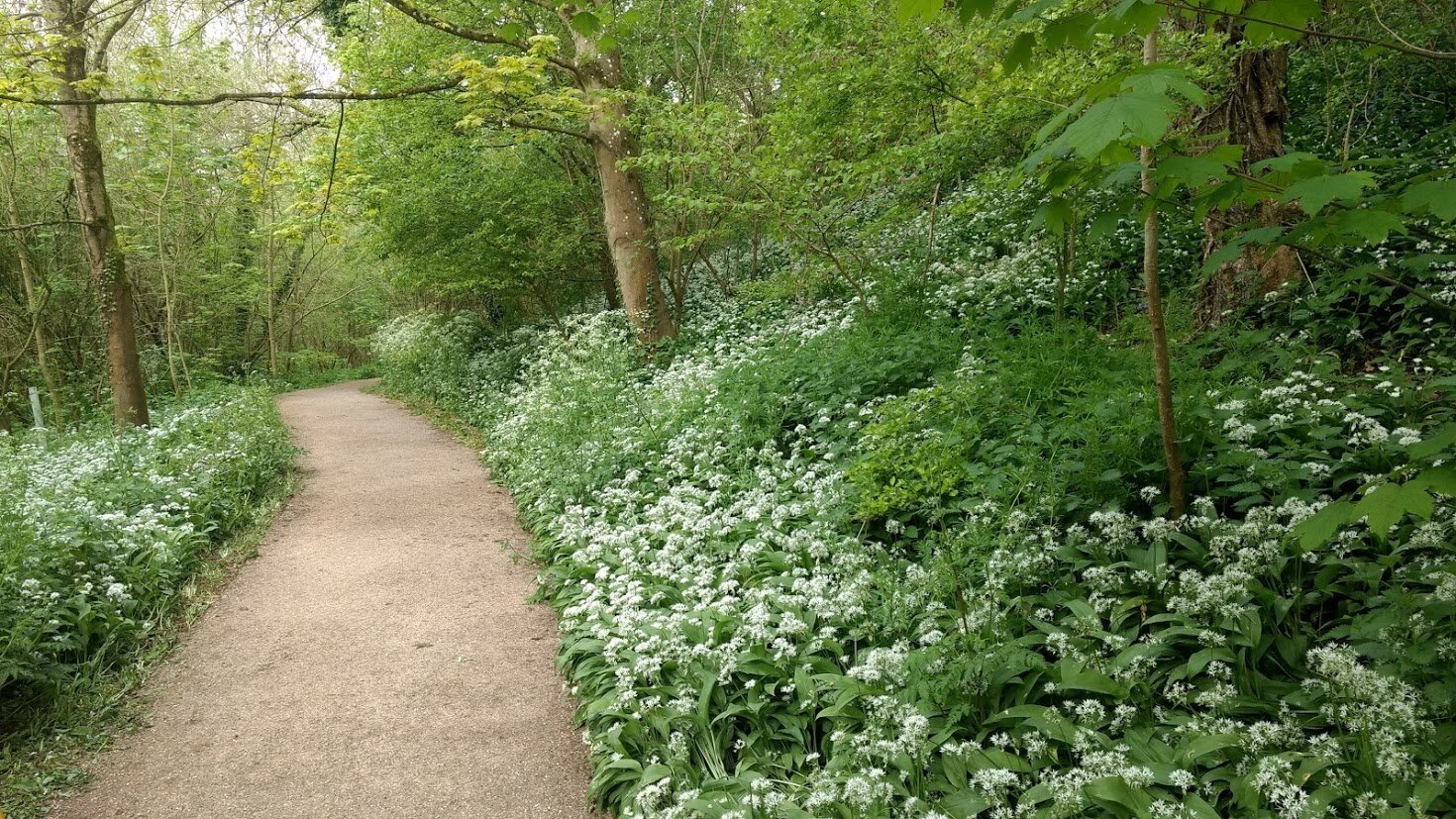A woodland walk this spring: What could you see?
Throughout the long winter months, woodlands can be an eerily quiet place to visit. The leafless trees patiently await the return of the warmer weather. As the days begin to lengthen, insects awaken, birds begin to sing, and the familiar sights and sounds return to the forest. There can be no better time to connect with nature than in spring.
One of the key changes I first notice is the green shoots of plants emerging from the forest floor, a sure sign that winter is over and spring has returned. As March progresses, early flowering Wild Garlic fills the air with its pungent aroma, sending up its bold white flowers which can carpet areas of the forest. This is joined by yellow Daffodils and Celandine adding further splashes of colour to the woodland floor.
The word April comes from the Latin for the opening of a leaf, a fitting name for a month when life fully returns to our woodlands. The bluebells have begun to emerge thanks to the warm and sunny spring we have been having this year shines, providing one of Britain’s finest natural spectacles. These early spring flowers take advantage of the ample light available in early spring before the woodland canopy fully emerges. Above the forest floor, the trees begin to awaken from their winters rest. Bright, fresh new leaves of Hawthorn, Oak and Beech begin to unfurl and cast a luminous green hue on to the forest floor.
Butterflies and bees emerge and begin to feed on early flowering trees such as the blackthorn, wild cherry and crab apple. These early flowering trees provide a useful nectar source with their pink and white flowers. Overwintering species such as Red Admiral are joined by newly emerged Orange Tips as spring progresses. Butterflies in the UK have been in rapid decline since the 1970s (Butterfly Conservation). Therefore, these early flowering trees are taking on ever increasing importance in our landscape.
Blackthorn blossom
A key change you will notice is the return of birdsong to the forest. Migratory birds such as the Chiffchaff and Blackcap return from Europe to feed on the renewed insect life and raise their young in the hedgerows and trees across the country. Male birds stake their claim to territories and attempt to out sing each other in efforts to attract a mate. With the trees not fully in leaf, you may notice blackbirds carefully collecting moss to line their nests or the Woodpigeon diligently collecting twigs to construct its nest. Each year I eagerly await the first familiar “pipis” and “chirps” of the returning house martins, a sure sign of warmer days to come.
Our native broadleaved woodlands are one of the most diverse habitats, yet only cover 13% of the country (Forest research - 2019 statistics). By planting new woodland, 9Trees are helping to provide valuable additional habitat for our native wildlife.
Photos and words by Will Maiden: Assistant Tree Office at the London Borough of Camden





